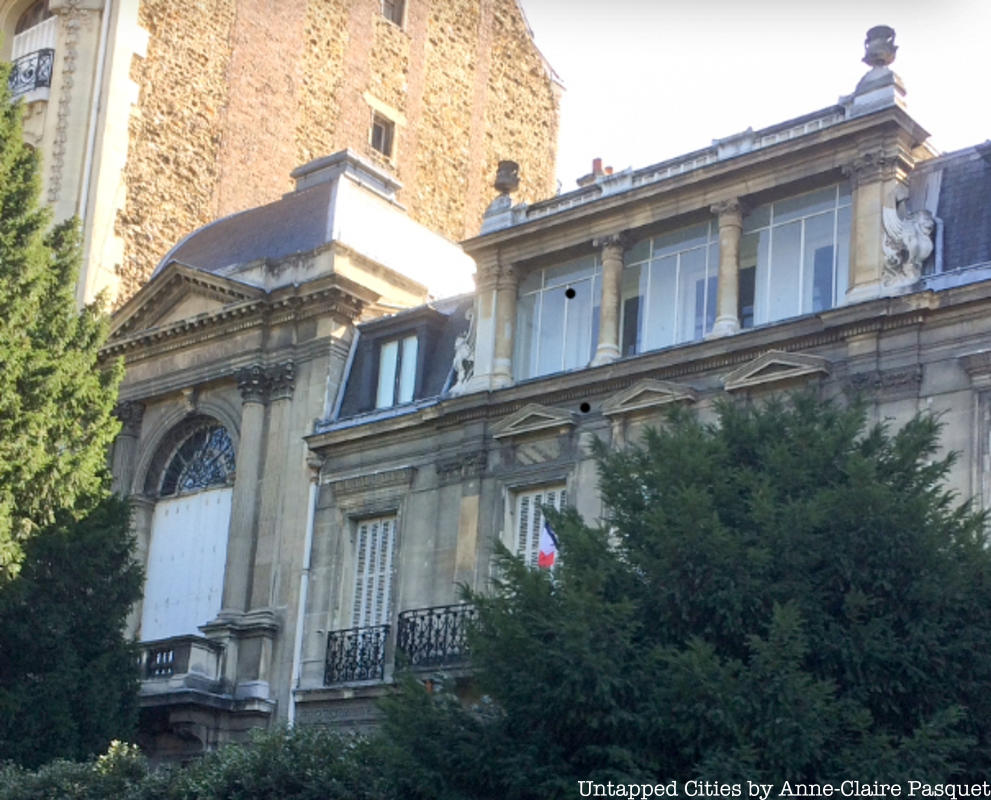
The Musée d’Ennery is one of Paris’s least known house museums, but one of the city’s most evocative gateways to the nineteenth century. The hôtel particulier and its contents, 6,300 objects from across Asia, remain much as they were when Clémence and Adolphe d’Ennery died in 1899.
Adolphe d’Ennery made his living as a playwright, with over two hundred works allowing him to live well. Both he and his wife collected art from the 1850s onward, though Clémence d’Ennery was principal in arranging for the collection to be left as a museum. When the couple built this house on the Avenue Foch, then the Avenue de Bois du Boulogne, in 1875, they were among those who established the West of Paris as a fashionable place to live.
It’s easy, walking through the Musée d’Ennery, to be distracted from this history by the beauty of the objects on display. The d’Ennerys did not collect in a systematic way, but rather bought what caught their eye, and accordingly different items constantly catch the visitor’s attention.
Tokugawa period netsuke—tiny miniatures used for attaching pockets to kimono—are particularly impressive; hundreds of incredibly detailed figures are displayed as Clémence d’Ennery arranged them, grouped in cases on small tables that visitors can walk amongst. Elsewhere, there are ceramics from Kyoto, porcelain brought to Europe by East India companies and Ming lacquerware, carved ivory and gemstones. In one of the Musée d’Ennery’s rooms, masks hang high on walls: some are processional, while others were produced specifically for sale as tourist souvenirs.
Stories behind items sometimes intersect intriguingly with 19th century history. There are large vases bought after the 1867 Exposition Universelle, where they represented Japan. Some places the couple shopped—like Le Bon Marché—remain central to Paris life, while others have closed. They bought, too, from other collectors, and it’s exciting to think of items changing hands before finding their permanent home in the sixteenth arrondissement in what would eventually become the Musée d’Ennery. Despite their collection, the d’Ennerys never visited Asia but rather—like most in nineteenth century France—were fascinated from afar.
While the collection and its stories are fascinating, the aura of the Musée d’Ennery is particularly bewitching. Open only on guided tours (in French) that must be booked in advance, visiting feels slightly like intruding on private property. Until last April, the fragility of the interior meant the museum had been closed to the public for sixteen years.
The personalities of Adolphe and Clémence d’Ennery weigh heavily on the space; after passing the ceramic monsters that guard the entrance, visitors wait for their guide in a dark foyer presided over by the bust of Adolphe d’Ennery. It’s hard to forget that these rooms are usually empty, that more often than not these displays have no audience.
This emptiness is made more striking by just how much there is to look at, given the Musée d’Ennery’s sumptuous interiors. These are Second Empire in style, the foreign context heightening the objects’ impact. In one room, clouds are painted on the ceiling. In another, marble Corinthian columns lead to angels and gold leaf. Display cabinets, often inlaid with mother of pearl and backed with velvet, were designed specifically for the collection. Ceramic animals and creatures from Japanese and Chinese mythology, sit arranged by colour or type, looking out from behind glass.
In the 1850s, decades before the creation of the museum, Jules de Goncourt described the d’Ennery collection as “a menagerie of fantasy” and these words still feel appropriate. Today, the Musée d’Ennery is a beautiful testament to the late nineteenth century fashion for Asian art, mythology and decorative techniques in France.
All photographs courtesy of the Musée d’Ennery. Get in touch with the author @annakblair and check out her blog Flappers with Suitcases.





